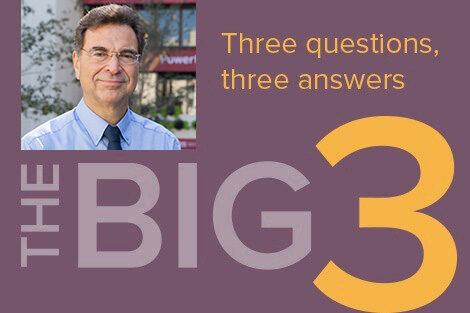March 5, 2021 – David Christiani, Elkan Blout Professor of Environmental Genetics and director of the Harvard Education and Research Center (ERC) for occupational safety and health at Harvard T.H. Chan School of Public Health, says that U.S. workers need better protection from aerosol transmission of COVID-19. He is among a group of experts calling for more stringent federal workplace standards.
Q: What is the problem with current guidance regarding COVID-19 worker protections?
A: The Centers for Disease Control and Protection (CDC) has been slow in revising its recommendations regarding respiratory protection for workers because of the fear that there might be a supply shortage of N95 masks, which provide the highest level of protection against aerosol transmission of COVID-19. Aerosol is a suspension of fine droplets in air that can disperse more widely than large droplets. A year ago we had a shortage of personal protective equipment, but there is no longer a shortage. In fact, manufacturers of N95 masks say there is a big inventory.
Current CDC guidelines don’t recommend the use of N95s to protect against COVID-19 in non-healthcare settings. But at this point, the several million workers in higher-risk categories, in places such as meatpacking plants, food processing plants, warehouses, and prisons, should be given N95s. There’s no reason these workers have to be at increased risk.
Another issue is that there is still the impression among some in the medical community that since most COVID-19 is transmitted only by larger droplets, you don’t need widespread use of N95s for the general public. It’s true that not everyone going outside or to the market needs this level of protection. But among certain groups of workers, aerosol transmission of COVID-19 has been shown to be an issue, even though it may not be the predominant mode of transmission. For example, in closed spaces without adequate ventilation, some workers are at really high risk.
It’s worth noting that the lack of adequate respiratory protection disproportionately falls on immigrant workers, so this is also a health disparities issue.
Q: What have you been doing to push for stronger protections?
A: On February 15, a group of 13 medical and scientific experts on infectious aerosol transmission sent a letter to Jeffrey Zients, coordinator of the Biden administration’s COVID-19 response, Rochelle Walensky, director of the CDC, and Anthony Fauci, director of the National Institute of Allergy and Infectious Diseases, calling for the immediate inclusion of measures to protect people from aerosol inhalation both in CDC guidelines and in Occupational Health and Safety Administration (OHSA) regulations.
I wasn’t a signatory to the letter, but after it went out, the signers contacted me to help because of my role as director of an ERC. ERCs are research centers funded by the National Institute for Occupational Safety and Health (NIOSH), which is part of the CDC. The letter’s signers asked me to communicate with directors of other NIOSH centers to urge them to write their own letters to federal and state officials urging tougher standards.
Q: Are you hopeful that these standards will soon be strengthened?
A: There’s no question the Biden administration is moving in the right direction. The president has directed OSHA to issue emergency temporary standards for COVID-19 by March 15. But OSHA bases its decisions on CDC guidance, which is why it’s so important for the CDC to update that guidance now. Without stronger CDC recognition and updated guidance about the importance of aerosol inhalation as a mode of COVID-19 transmission, OSHA will be limited in what it is likely to require of employers for protecting workers from COVID-19. Hopefully they can make the right decision on the 15th.
